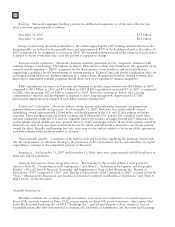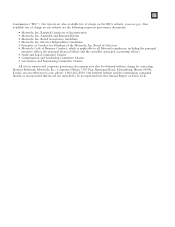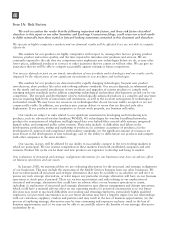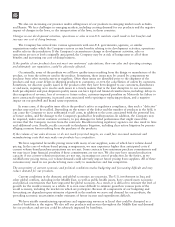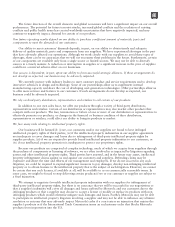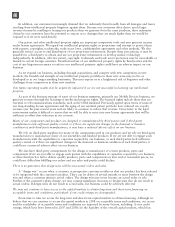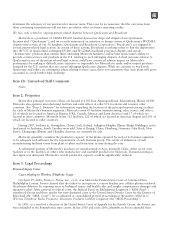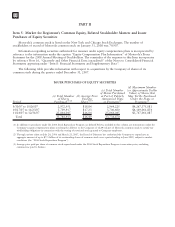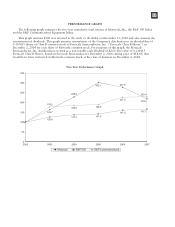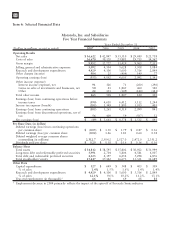Motorola 2007 Annual Report Download - page 34
Download and view the complete annual report
Please find page 34 of the 2007 Motorola annual report below. You can navigate through the pages in the report by either clicking on the pages listed below, or by using the keyword search tool below to find specific information within the annual report.
In addition, the laws and regulations that apply directly to access to, or commerce on, the Internet are still
evolving. We could be adversely affected by any such regulation in any country where we operate. The adoption of
such measures could decrease demand for our products and at the same time increase the cost of selling such
products.
Consolidations in both the cable and telecommunication industries may adversely impact our business.
The cable and telecommunication industries have experienced consolidation and this trend is expected to
continue according to industry estimates. Industry consolidation could result in delays of purchases or in the
selection of new suppliers by the merged companies. This could adversely effect equipment suppliers like Motorola
and our competitors. Due to continuing consolidation within the cable and telecommunications industries
worldwide, a small number of operators own a majority of cable television systems and account for a significant
portion of the capital spending made by cable telecommunications systems operators.
Recent FCC regulations requiring separation of security functionality from set-tops could negatively impact our
sales of set-tops.
Historically, reception of digital television programming from a cable broadband network has required a set-
top with security technology. As a result, sourcing of these set-tops was traditionally limited to a few cable
network manufacturers, including Motorola. FCC regulations requiring separation of security functionality from
set-tops that are aimed to increase competition and encourage the sale of set-tops in the retail market became
effective for most customers on July 1, 2007. Traditionally, cable service providers sold or leased the set-top to
their customer. As the retail market develops for set-tops and televisions capable of accepting the security modules,
sales of our set-tops may be negatively impacted.
We rely on complex information technology systems and networks to operate our business. Any significant system
or network disruption could have a material adverse impact on our operations, sales and operating results.
We rely on the efficient and uninterrupted operation of complex information technology systems and networks
some of which are within Motorola and some are outsourced. All information technology systems are potentially
vulnerable to damage or interruption from a variety of sources, including but not limited to computer viruses,
security breach, energy blackouts, natural disasters, terrorism, war and telecommunication failures. There also may
be system or network disruptions if new or upgraded business management systems are defective or are not
installed properly. We have implemented various measures to manage our risks related to system and network
disruptions, but a system failure or security breach could negatively impact our operations and financial results. In
addition, we may incur additional costs to remedy the damages caused by these disruptions or security breaches.
Our share price has been and may continue to be volatile.
Our share price has been volatile due, in part, to generally volatile securities markets, and the volatility in the
telecommunications and technology companies’ securities markets in particular. Factors other than our financial
results that may affect our share price include, but are not limited to, market expectations of our performance,
capital spending plans of our customers, and the level of perceived growth in the industries in which we
participate.
The level of returns on pension and retirement plan assets could affect our earnings in future periods.
The funding obligations for our pension plans are impacted by the performance of the financial markets,
particularly the equity markets, and interest rates. Funding obligations are determined under government
regulations and are measured each year based on the value of assets and liabilities on a specific date. If the
financial markets do not provide the long-term returns that are expected under the governmental funding
calculations we could be required to make larger contributions. The equity markets can be, and recently have been,
very volatile, and therefore our estimate of future contribution requirements can change dramatically in relatively
short periods of time. Similarly, changes in interest rates can impact our contribution requirements. In a low
interest rate environment, the likelihood of required contributions in the future increases.
The outcome of currently ongoing and future examinations of our income tax returns by the IRS could impact our
financial results.
We are subject to continued examination of our income tax returns by the Internal Revenue Service and other
tax authorities. We regularly assess the likelihood of adverse outcomes resulting from these examinations to
26


